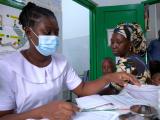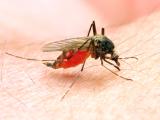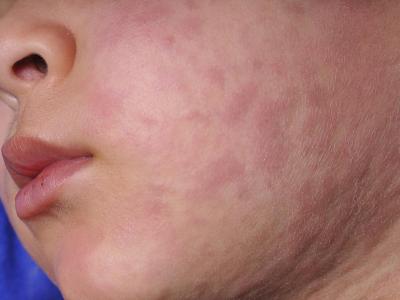Some high-flying tropical mosquitoes carry disease-causing pathogens long distances, study finds
In the first study of its kind, mosquitoes captured high above Mali and Ghana were found to be infected with arboviruses, protozoans, and parasitic worms that cause human diseases such as dengue, malaria, and the disfiguring illness lymphatic filariasis, researchers reported yesterday in PNAS.
They also note that the vectors could spread diseases many miles away.
From March 2018 to October 2022, the team used nets suspended from helium balloons at night to obtain 1,017 wind-borne mosquitoes (81% female) from 61 species. The mosquitoes, many carrying eggs, were of 61 species and 10 genera, mostly Culex, Aedes, and Anopheles, at altitudes of 120 to 290 meters (393 to 951 feet).
Wind-borne insects can temporarily migrate up to hundreds of kilometers per night, said the authors, from the US National Institutes of Health, Mali, and Ghana. But migrations in tropical mosquitoes are poorly understood, including their effects on mosquito survival, reproduction, range expansion, and spread of insecticide resistance, and the epidemiologic factors of vector-borne diseases are unclear despite their potentially large effects.
“Mosquito-borne diseases threaten public health and food security,” they wrote. “Long-range spread of these pathogens has been regarded as reflecting human or animal movement.”
Pathogens can infect hosts far away
Rates of infection among the mosquitoes were 7.2% for Plasmodium species, 1.6% for parasitic nematodes (roundworms), and 3.5% for flaviviruses such as those that cause dengue and West Nile infections.
Mosquito-borne diseases threaten public health and food security.
Twenty-one mosquito-borne pathogens that infect vertebrates were identified, including dengue, West Nile virus (WNV), and mpox virus; three filarids, including Pelecitus spp. (affects mostly birds and can cause rare eye infections in people); and 15 avian Plasmodium species, including P matutinum (affects birds only).
At least 20 of the 21 mosquito-borne pathogen species circulate among wild animals. (For example, dengue virus serotype 2 also circulates among nonhuman primates, and perhaps birds, in West Africa.) Confirmed disseminated infections with multiple pathogens in Culex perexiguus, Mansonia uniformis, and Anopheles squamosus mosquitoes showed that pathogens can infect hosts far from their departure location.
Animal-to-animal, animal-to-human circulation
“High rates of disseminated infections (overall 6.3%) implicated a considerable proportion of these mosquitoes as infectious—ready to transmit pathogens when taking a blood meal after landing,” the researchers wrote. “These pathogens represent sylvatic (i.e., circulating among wild animals) and zoonotic (transmitted to people from an animal natural host) species, e.g., WNV, which are transmitted by mosquitoes mainly among birds.”
High rates of disseminated infections (overall 6.3%) implicated a considerable proportion of these mosquitoes as infectious—ready to transmit pathogens when taking a blood meal after landing.
“Migrating mosquitoes are not only infected i.e., exposed to these pathogens, but are already likely infectious, i.e., presenting a disseminated infection to the haemocoel [body cavity] and likely to the salivary glands, highlighting their probable capacity to transmit pathogens upon landing in a distant territory,” they added.
The authors recommended that public health decisions about the risk of mid- and long-range mosquito-borne disease transmission consider vulnerable populations downwind from sources up to hundreds of kilometers away and devise ways to minimize emigration from these sources, monitor primary wind corridors, and prepare rapid-response protocols to curb local spread after signs of disease appear in new destinations.




















